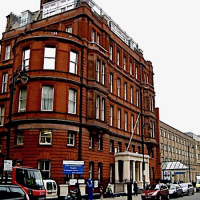Dermatomyositis
Dr Clarissa Pilkington - Rheumatology
Created on: 11-13-2012
Updated on: 08-03-2023
Edited by: Kate Forristal

What is dermatomyositis?
Dermatomyositis (DM) is a disease that is characterised by chronic inflammation of the muscles and the presence of rashes on the skin. People of any age can be affected by DM and the condition affects about twice as many women as men. There are different types of the condition such as paraneoplastic dermatomyositis, which is associated with cancer, and juvenile dermatomyositis, which affects children.
Prognosis
Depending on the degree of the disease, it is possible to combat DM with the supply of some drugs, although if it has evolved until the development of arthritis or a tumour, the treatment will be more complex.
Which specialist treats dermatomyositis?
Being a condition with a variety of symptoms, experts from different specialities participate in the personalised treatment of patients. Rheumatologists treat the patient in cases where the disease causes arthritis and dermatologists are the specialists who treat the rashes and redness of the skin. If DM is associated with a tumour, an oncology specialist will be in charge of the treatment and monitoring of the patient's cancer.
Symptoms of dermatomyositis
The symptoms are:
- Rashes on the knuckles, around the eyes, on the elbows, knees, and on the chest or back
- Muscle inflammation
- Muscular weakness
- Arthritis
Depression has also been reported in some patients
Medical tests to diagnose dermatomyositis
Determining a diagnosis of dermatomyositis can be complicated due to its overlapping symptoms with other conditions. The patient’s medical history will be taken and a physical examination will be performed. A blood test can be used to detect muscle damage, as damaged muscle releases specific enzymes into the bloodstream. Further tests involve a muscle biopsy to analyse a small piece of muscle tissue under a microscope and electromyography (EMG), an examination of muscle electrical activity.
What are the causes of dermatomyositis?
The cause of DM is unknown, although some researchers indicate that it could occur in genetically susceptible patients who have been exposed to certain chemicals, viruses, or other infectious agents. On the other hand, it can be associated with other diseases such as lupus or rheumatoid arthritis.
Can it be prevented?
Due to the causes being unknown, methods to prevent the condition from occurring haven’t been established.
Treatments for dermatomyositis
Treatment of dermatomyositis consists of prescribing corticosteroids and medications that suppress the immune system, as well as recommending moderate physical exercise, heat treatments and rest. If the condition is associated with cancer, known as paraneoplastic dermatomyositis, treatment involves the removal of the tumour.




